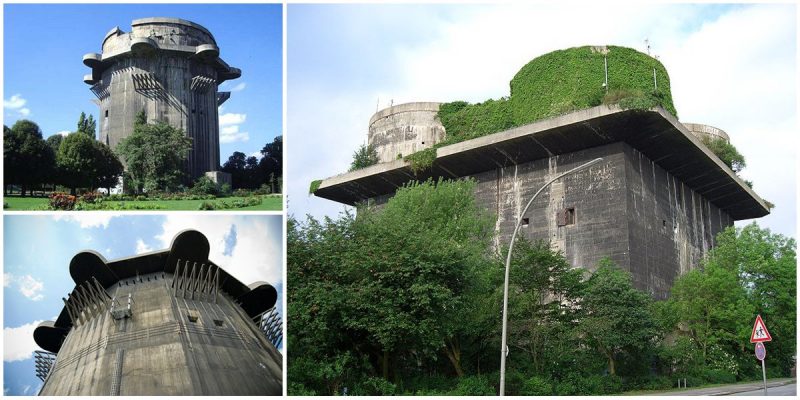After the occupation of France, the British knew that they were next on the list. It was the summer of 1940 when German bombers attacked Britain for the first time, killing over 1,000 civilians by the end of August. They mostly targeted the Channel ports and attempted to destroy the Royal Air Force, but they were stunned to find out that defeating Britain was way harder than expected.
Many towns and cities, including Norwich, Birmingham, Wrexham, Liverpool, and Southampton, were badly bombed that summer, but everything changed on the night of August 24, when the Luftwaffe accidentally dropped bombs on London. Churchill, who believed that it was a deliberate attack, was quick to react, ordering an immediate strike on Berlin. The next evening about 40 British bombers attacked Berlin and another raid followed on the night of August 28 and another one on August 30.
Hitler was outraged, and he threatened to raze British cities to the ground, but he also had to do something to prevent future attacks on the German capital. He came up with the idea of building bomb-proof flak towers throughout the country, where his Luftwaffe’s anti-aircraft artillery would be sheltered.
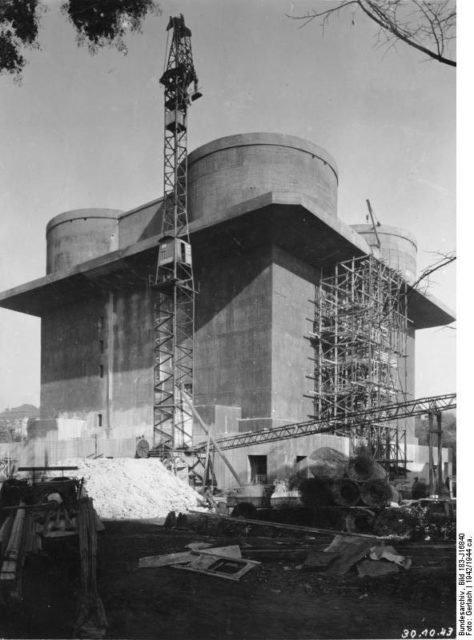
Hitler’s idea would be brought to life by German architect Friedrich Tamms, who designed all flak towers throughout Germany. Apart from designing these monumental concrete complexes, Tamms is credited with the design of numerous other military buildings, bunkers, and shelters. He is also considered by many to have set the foundations of an architectural movement that in the post-war era would become known as Brutalism.
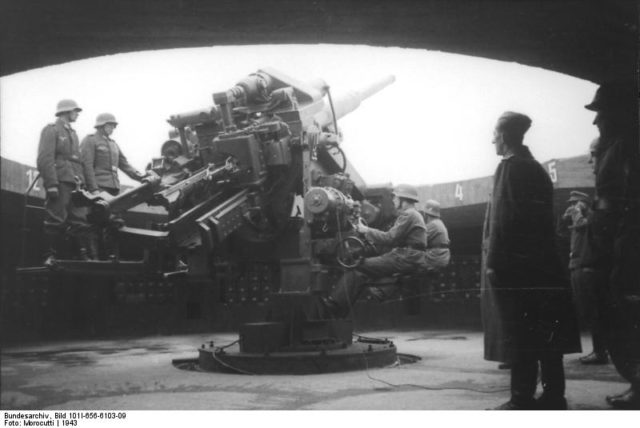
Construction began almost immediately and in about six months, three massive 128-foot-tall concrete fortresses were fully constructed. Their purpose: to protect Berlin from aerial attacks.
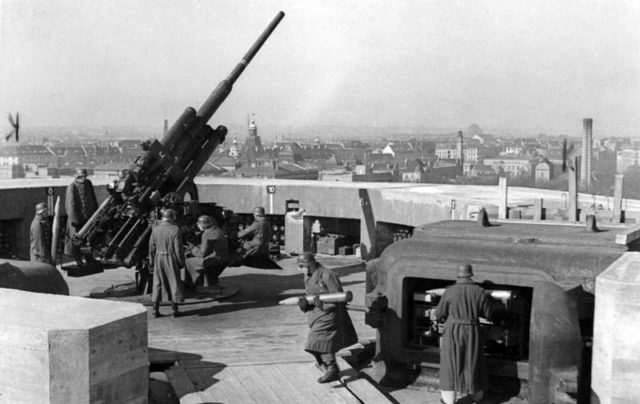
Of course, the construction of the three flak towers in such a short period would have been impossible without the hundreds of forced laborers and POW’s brought to Berlin from all across Europe.
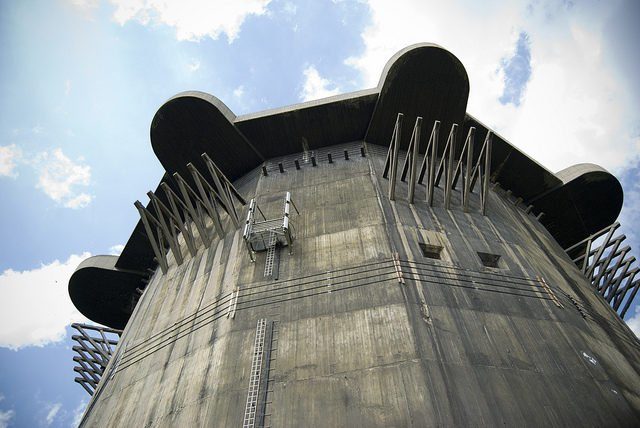
Hitler’s initial plan was to construct six flak towers in the German capital, but they only managed to build three. Two of them were completely destroyed and only the Humboldthain tower survived the war, despite the fact that it also suffered severe damage.
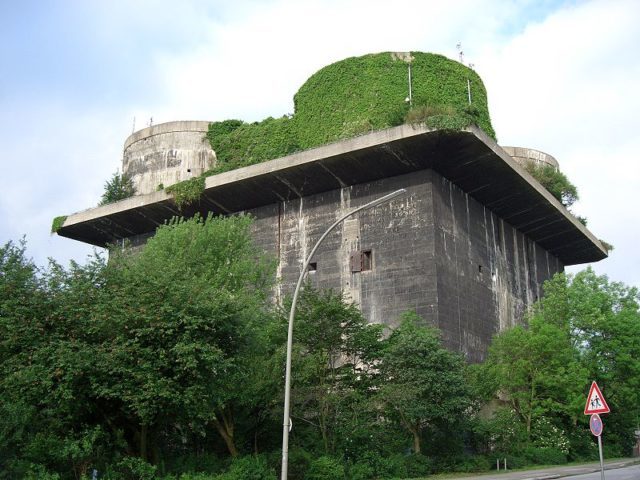
In addition to the three flak towers built in Berlin, Hitler also ordered the construction of three more in Vienna and two in the strategically important city of Hamburg. Many more of these gigantic towers were planned, but they never saw the light of day.
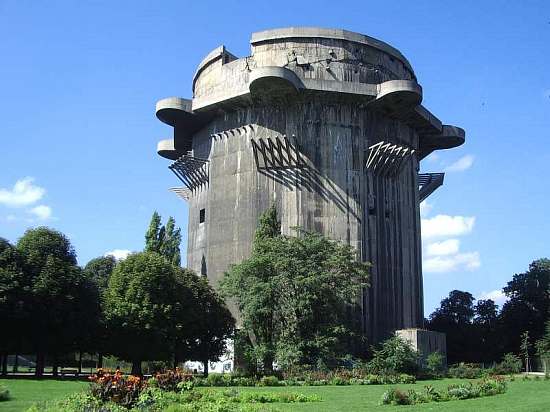
Each of these tower complexes actually consisted of two towers, meaning that there were in all 16 towers in Berlin, Hamburg, and Vienna. Every complex had a larger “G-Tower” that was used for gun mounts, and a smaller one known as the “L Tower,” used for fire control and command. They were all able to fire 7,000 to 8,000 rounds per minute with an average range of nearly 9 miles.
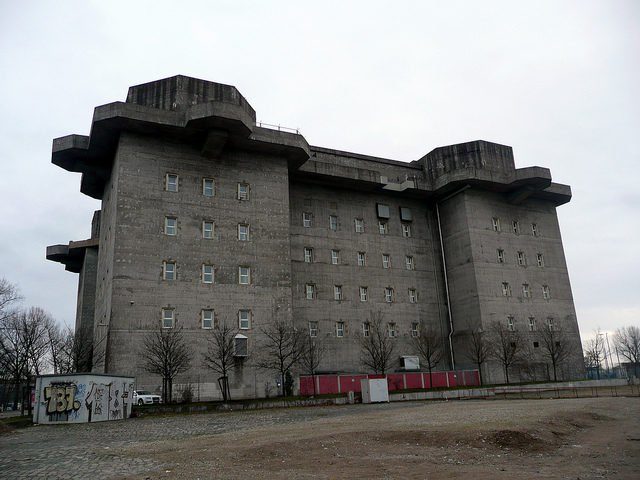
The flak towers were self-sufficient, having their own supply of electricity, water reservoirs, small hospital, and food supplies. But what was more important, each tower could accommodate around 10,000 people, meaning that numerous civilians could use them as bomb shelters.
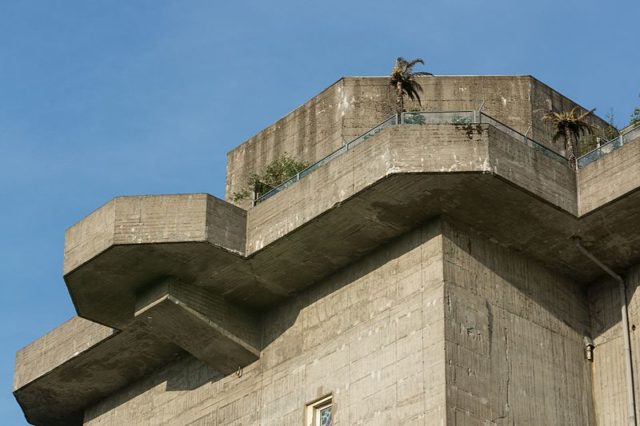
The walls of these valuable military assets were more than 11 feet thick, and the ceilings were also thick enough to be immune to almost any kind of air attack of the time.
Even today, the towers that survived look as imposing as they did over 70 years ago and remain as a symbol of Hitler’s absolute power and the terrors of the Nazi regime.
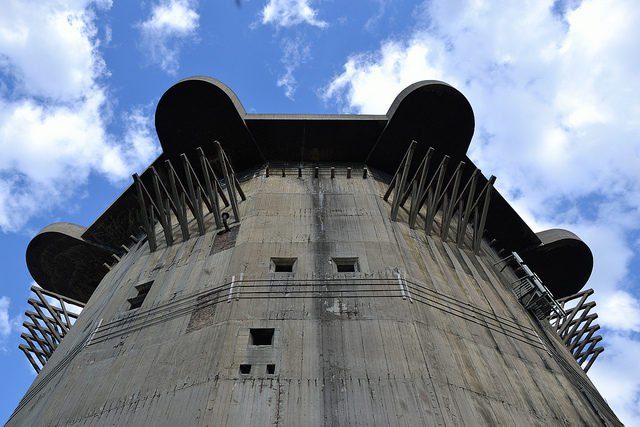
About half of the 16 towers were demolished after the war, but this proved to be too expensive, as tons of explosives were required for the purpose.
Related story from us: Fingal’s Cave: The Gaelic cave celebrated by artists, writers, and musicians
The rest of the towers were converted to new roles. In Vienna, one of the towers houses an aquarium and the Austrian Army still uses another. In Hamburg, one might become the largest solar-power plant in Europe and another one houses a nightclub.
